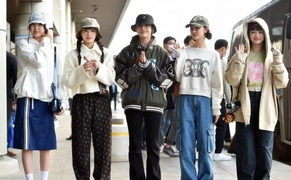 |
| Kim Su-young, an official at Statistics Korea, speaks at the Sejong Government Complex in Sejong on Dec. 9, 2021./ Source: Yonhap News |
AsiaToday reporter Son Cha-min
Over 40 percent of Korean cities and towns have become a super-aged society last year.
According to year-end resident registration data compiled by the Ministry of Interior and Safety, 41.8 percent or 109 out of 261 regional governments nationwide reported they are now super-aged, which means more than 20 percent of residents are 65 or older.
Overall, it was found that rural regions have seen their populations age faster than urban regions.
Uiseong in North Gyeongsang Province saw the highest percentage of the elderly population among cities and towns across the country. People aged 65 and over accounted for 40.8 percent of the total population in Uiseong. The number of senior citizens in Goheung in South Jeolla Province also exceeded 40 percent of the total population, with 40.5 percent.
It was followed by Gunwi in North Gyeongsang Province with 39.7 percent, Hapcheon in South Gyeongsang Province with 38.9 percent, Boseong in South Jeolla Province with 37.9 percent.
By cities and provinces, North Gyeongsang Province had the largest number of super-aged societies with 19, followed by South Jeolla Province with 18 super-aged regions, Gangwon Province with 14, South Gyeongsang Province with 13, and North Jeolla Province with 11.
However, six cities and provinces including capital Seoul, Daejeon, Ulsan, Sejong and Jeju had no super-aged societies.
The problem is that Korea is moving rapidly to a super-aged society.
The proportion of seniors, aged 65 or over, came to 15.8 percent in Korea last year. The nation became an aged society in 2018 after becoming an aging society in 2001.
Statistics Korea had recently forecast that South Korea would become a super-aged society in 2025.
It took 17 years for the nation to become an aged society from an aging society, but it may take only 7 years to become a super-aged society from an aged society.
There is concern that Korea’s potential growth rate will gradually decrease and the fiscal burden will rise sharply as the population relying on welfare benefits and pensions outgrows the working-age population.
#superaged #South Korea #aging #aged society
Copyright by Asiatoday
Most Read
-
1
-
2
-
3
-
4
-
5
-
6
-
7





















